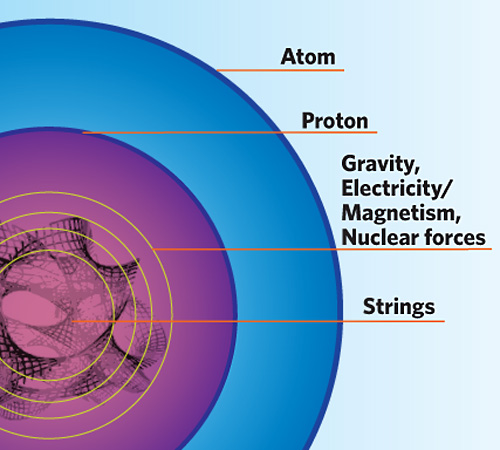Test of string theory proposed

Graphic by Deborah Su
April 10, 2008
University cosmologists have proposed a method of testing string theory by implanting networks of radio towers on the far side of the moon. “String theory is the leading contender for a theory of everything,” said Benjamin Wandelt, a University cosmologist.

String theory unifies all four fundamental forces in nature: gravity, electricity (coupled with magnetism) and the two strong and weak nuclear forces, he said. The theory relates all matter and energy in the universe to vibrating string-shaped entities, simply referred to as strings. By Einstein’s canonical equation, E=mcý, which equates energy with matter, the vibrating energy of these strings gives rise to the matter in the universe.
“Strings are the fundamental building blocks of the universe,” said Rishi Khatri, a graduate student who assists Wandelt in his research.
Khatri added that humans, objects, natural forces and the entire universe all are essentially a harmony of vibrating strings.
Get The Daily Illini in your inbox!
However, the strings do not exist in the three- to four-dimensional world – three for space and one for time – perceived by humans. For the theory to be mathematically valid, the strings must exist in 10 or 11 dimensions.
“This leads to the possibility of creating exotic new forms of matter,” Wandelt said.
Wandelt has proposed to test string theory by looking for imprints of large strings in the cosmic microwave background radiation, the afterglow of the big bang that permeates the entire universe.
“Large strings are very massive and have gravitational effects on things around them,” Wandelt said. “They create density fluctuations and make some regions (of the cosmic microwave background radiation) denser than others.”
The cosmic background radiation is then left with signatures of the large strings.
“By analyzing the radiation and seeing if it matches with predictions, evidence of the theory can found,” Khatri said.
Khatri added that the radiation is of FM frequency. Wandelt proposes to construct an array of radio towers on the far side of the moon to detect the FM frequency.
Previous tests for string theory involved smashing subatomic particles. Wandelt’s test is the first to use astronomical data as evidence of strings.
NASA has funded a study for the building of such an array that would be used for the study of fundamental physics and could also be used for his test of string theory, he said.
Although string theory has been accepted by many scientists, it has not been proven since its inception in the 1960s and is widely criticized for the difficulties that must be overcome to test the theory.
“Contenders would say that even if you find cosmic strings there could be other explanations for them (outside of string theory),” Wandelt said.
Wandelt conceded that there would be little conventional application for string theory but, if proven, would have groundbreaking philosophical import.
“If we found evidence of string theory, we would be much closer to writing down the fundamental laws of nature,” Wandelt said. “The dream of an ultimate theory would be fulfilled.”






